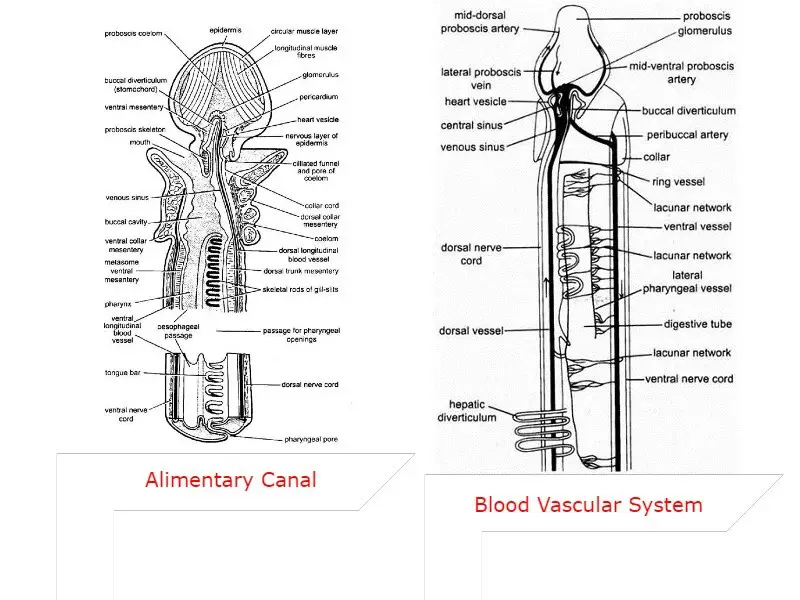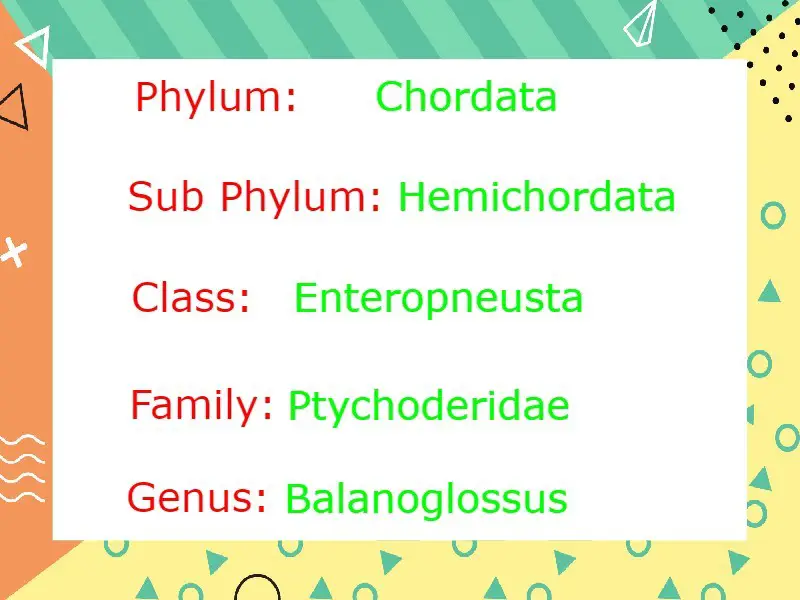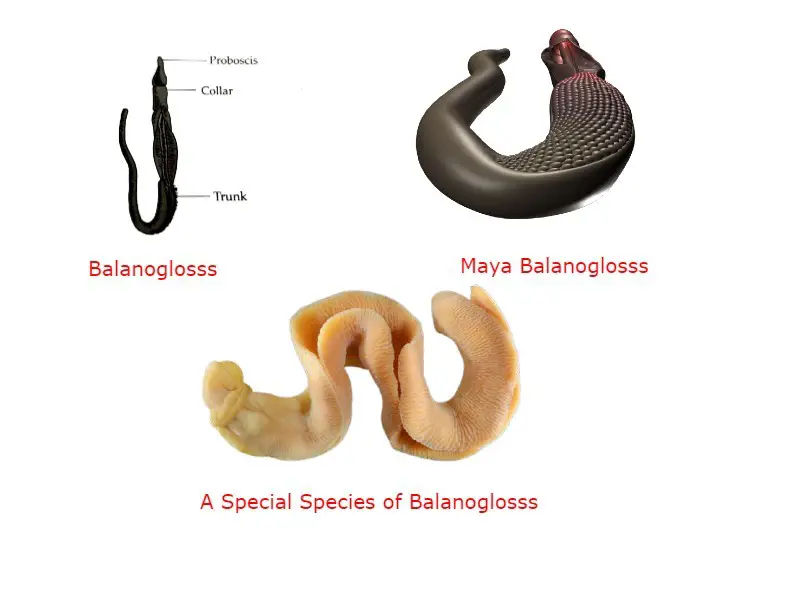Body Wall is thick and muscular in Balanoglossus, body wall can be differentiated into three distinct layers from outside to inner side. The body wall is composed of the outermost epidermis middle muscular tissue and innermost peritoneum, we will discuss each layer in detail below.
Table of Contents
Epidermis:
The epidermis in Balanoglossus is glandular and bear cilia, epidermis have different types of glandular cell which takes part in secretion. Epidermal cells are columnar and ciliated, some of them have slender shapes. Epidermal cells are present in a single layer above the muscular tissue which gives protection to their interior tissue from outside.

Glandular cells are present in their whole body but they present in abundance in the collar region. The glandular cells present in epithelial tissue of Balanoglossus secret mucous and they have three types of mucous secreting cell –
- Goblet Gland Cell: This types of mucous secreting cell have a flask shape with fine granules.
- Reticulate Gland Cell: Reticulate Gland Cell have special type of cytoplasm, their cytoplasm is like a network or web and cytoplasm are vaculated.
- Mulberry Gland Cell: Mulberry or granular gland cells have rough granules and this type of glandular cell secret amylase.
In their proboscis region a special type of cell, neurosensory cells present and below the epidermal cells a thick layer of nerve cells and nerve fibres are present. The dermis layer is not present and below the thick nerve cells and nerve fibres layer, a basement membrane is present on which all epidermal cells are arranged and below the basement membrane muscular tissue is present.

Basement membrane act as supportive proper for both the epidermal cells and the muscular tissue below the basement membrane.
Muscular Tissue:
The body wall of Balanoglossus is tough due to the presence of circular and longitudinal muscle fibres. The muscular tissue is attached to the basement membrane of epidermal tissue, muscles are not very strong in Balanoglossus.
The Body Wall of Balanoglossus have weak and smooth muscle, they have both circular and longitudinal muscle but most of the muscle fibres in the body wall of Balanoglossus is longitudinal muscle fibres.
As we told that most of the muscle in their body wall is longitudinal, most of the longitudinal muscle fibres are present in the trunk region of their body wall.
Circular muscle fibres in their body wall are very less and it is present in only the proboscis and anterior region of the collar or collarette. In proboscis, the outer layer is made of circular muscle fibres and the inner layer is consists of longitudinal muscle fibres, in the collarette region same arrangement of muscular fibres is seen.
Peritoneum Layer:
It is the innermost layer of the body wall in Balanoglossus, in Balanoglossus body cavity or coelom present and this peritoneum later give the lining of the coelom. In Balanoglossus the body cavity is the true coelom and from the inner side, it is limited by the parietal peritoneum.

Importance of Body Wall in Balanoglossus:
- Give Protection Against External Mechanical Injuries: Balanoglossus have a soft body and the thick muscular tough body give protection to the delicate internal organs against different external mechanical injuries because they live in burrows made of sand and mud, the mucous secreting cell present on their epithelial tissue secret mucous which gives a smooth lining to the wall of burrows made of sand or mud which prevents the collapse of sand and mud in the burrows.
- Protection Against Predators: The epidermal tissue cells produce a foul smell which repel different predators and give protection Balanoglossus against their enemy animals.
- Help to Understand the External Environment: Balanoglossus live in marine water and they need to be aware about their surroundings and the neurosensory cells present in their epithelial tissue help them to take different external stimuli.
- Help in Body Movement: Contraction and relaxation of the circular and longitudinal muscle fibres present in their body wall help them to perform different types of body movement in Balanoglossus.
Reference:
Detailed Information on
Hi Everyone!!! Welcome to Imaluop. Imaluop always try to learn some new and he want to share to other people. Here we will try to learn various topics on Science, specially on Biological Sciences.
